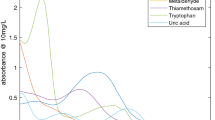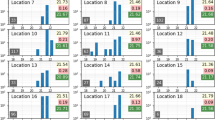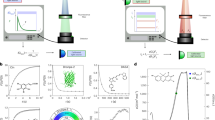Abstract
IN measuring the amount of ultra-violet light reaching the earth from sun and sky, it is customary to expose the acetone methylene blue tube in the vertical position. Since more ultra-violet light is received from the sun itself than from the whole of the rest of the sky put together, the vertical position seems unsuitable, for the amount of ultra-violet light received by the contents of the tube will be too low during the time of day and year when the sun is most nearly overhead. The horizontal position has occasionally been used, but this is open to the opposite criticism.
This is a preview of subscription content, access via your institution
Access options
Subscribe to this journal
Receive 51 print issues and online access
$199.00 per year
only $3.90 per issue
Buy this article
- Purchase on Springer Link
- Instant access to full article PDF
Prices may be subject to local taxes which are calculated during checkout
Similar content being viewed by others
Author information
Authors and Affiliations
Rights and permissions
About this article
Cite this article
BAKER, J. Measurement of Ultra-Violet Light. Nature 134, 139–140 (1934). https://doi.org/10.1038/134139c0
Issue Date:
DOI: https://doi.org/10.1038/134139c0
Comments
By submitting a comment you agree to abide by our Terms and Community Guidelines. If you find something abusive or that does not comply with our terms or guidelines please flag it as inappropriate.



